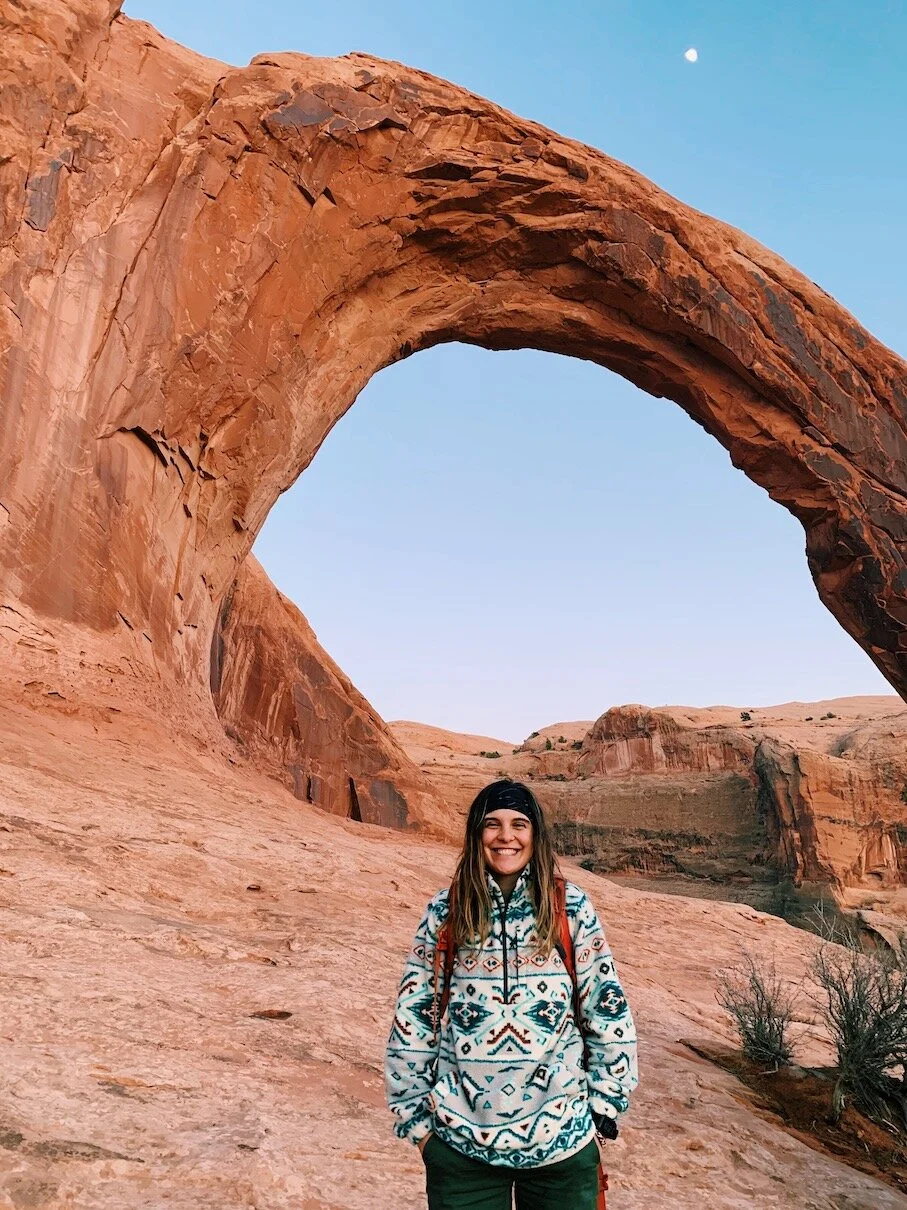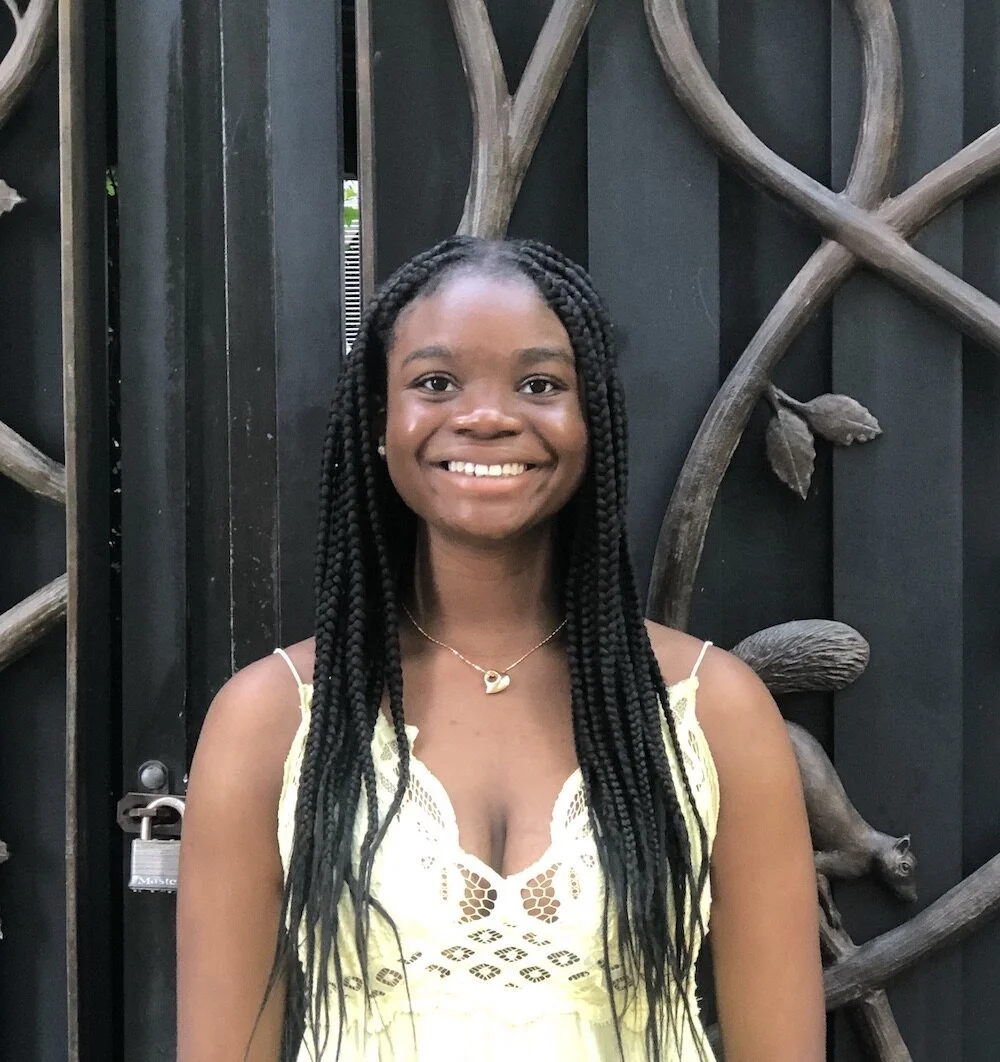Tell us something about the natural world that you love and don’t want to lose.
There is so much I could say in answer to this question. I think of waterfalls, sequoia trees, a lush rainforest. But if there was one thing that I would truly want to save that means the most to me, it would be the pine trees in the Mediterranean area. I grew up in Rome, Italy, in an apartment that sat at the same height as the tops of the pine trees. Pine trees don’t lose leaves in the winter and fall, so they stayed a constant view in my life as everything else changed. I watched, however, as fire, drought, and cutting changed the landscape of my beloved pine forest. Drought, due to climate change, is the biggest threat to these pine forests. Climate change looms over my mind every day. So much so, that I have decided to dedicate my future career to protecting the environment. I am currently a college student studying Environment and Sustainability. In my daily life, I also follow a plant-based and low-waste lifestyle, buy only second-hand clothing, and use sustainable items whenever possible. That is my personal pledge to fighting climate change; my personal pledge to the pine trees.
Last summer, I interned at Battery Park City Authority, a state park in lower Manhattan. I was involved with their sustainability efforts, especially by creating and filling out a monthly Sustainability Report. Currently, I am working on several efforts, especially through my university. I am a part of the Columbia University chapter of Sprout Up. Sprout Up is an organization that trains and sends instructors into elementary schools to teach young children about the environment, sustainability, and more. I am a lead instructor, and I go into a New York elementary school weekly to teach kids about these important issues. I am also the Director of Sustainability at Flow Columbia. This is a Columbia University club that is dedicated to normalizing diverse menstrual experiences and fighting period poverty. As the Director of Sustainability, I lead the Sustainability Committee, give talks about sustainable periods, and more. I am also involved with restarting the Sunrise Movement at Columbia, potentially as its co-president in the near future. This is the biggest project that I am currently working on. In the next few years, I plan on finishing my studies while conducting research for my senior thesis in environmental policy. I am also considering going to law school in the future to become an environmental lawyer.
When I was in third grade, I did not know much about sustainability or climate change. One day, on Earth Day to be exact, my teacher told us that today was a day we are meant to celebrate the Earth. ‘What do you love about the Earth?’ she asked. Our answers were reflective of our age: rainbows, the sea, butterflies. Then, she asked us, ‘Do you think you treat the Earth well?’ We answered yes; most of us recycled at home. She asked us if we knew where our trash went when we threw it away. ‘Hmm, no, I guess not,’ we replied. Our teacher drew a big bubble on the whiteboard and a little stick figure in the bubble. The stick figure was holding a cup. ‘Do you see this?’ she asked. Then, she erased the cup and drew it again at the bottom of the bubble. Next, she drew a packet of chips in the stick figure’s hands. She then did the same thing; erased it and redrew it at the bottom. This went on until the stick figure was surrounded by containers, utensils, cups, and chip packets. Then, she said: ‘The stick figure is you, and the bubble is our Earth. Everything you throw away never goes away. It stays here forever.’ Yes, it was quite heavy for a young child to hear, but it made such an impact on me that I still remember this moment today, at twenty years old. I also credit that moment as the beginning of my environmental activism. It was not only the story itself that stuck in my mind, but the way it was told. Storytelling is important, especially in the context of environmentalism, because it can make people relate to concepts that would otherwise be so far removed from them. Storytelling brings about a sense of community; an element that is so fundamental to fighting climate change together.
What I get out of working with the Creative Process is a community that is working together to help bring awareness to environmental issues. Community is in the very name of the One Planet podcast. I get a chance to work on my creativity. Working in sustainability can often be bleak and frustrating, and I often forget how important it is to approach the subject with a creative and open mind. Working with the Creative Process helps me further my career in sustainability, gain creative experience and build a community. So far, I’ve had a chance to co-host interviews with Jeffrey Sachs, President of UN Sustainable Development Solutions Network, and Seth Siegel, who discussed issues of water insecurity and management.














































































